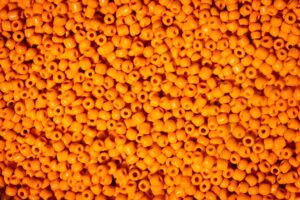In the sales and digital marketing landscape, understanding the meaning of a conversion rate is more than just a savvy move—it’s a necessity. This article will delve into what conversion rates are, why they’re vital, and how to enhance them using various strategies, from A/B testing to MOFU marketing.
Understanding Conversion Rates
A conversion rate is the percentage of prospects, leads, or users who who take a desired action. This could be responding favorably to a cold call, replying to an email, making a purchase, signing up for a newsletter, or downloading a whitepaper. Simply put, if you cold call 100 prospects and 20 request a meeting, your conversion rate is 20%. Said differently, if 50 out of 500 visitors to your site make a purchase, your conversion rate stands at 10%. Understanding this metric can help businesses refine their strategies, improve customer engagement, and ultimately, drive growth.
The Significance of Conversion Rates
Conversion rates are a critical metric because they allow you to measure how well your efforts are translating into actual results, such as meetings booked, demos requested, or newsletters subscribed to. A high conversion rate indicates that your marketing strategies are resonating with your audience, leading them to engage with your brand. Conversely, a low conversion rate could suggest that your tactics need refining.
Strategies to Improve Conversion Rates
Personalization
Personalization involves customizing your marketing efforts to suit the unique needs and preferences of your target audience. Companies like Netflix excel at this by recommending shows based on a user’s viewing history, thus encouraging more engagement and conversions.
A/B Testing
A/B testing involves comparing two versions of a webpage or marketing material to determine which performs better. Google, for example, famously tested 41 shades of blue to find the one that users clicked on the most, exemplifying the power of A/B testing in enhancing conversion rates.
Content Marketing
Content marketing focuses on creating and distributing valuable, relevant content that attracts and engages your audience. HubSpot, a leading inbound marketing platform, uses content marketing effectively by offering free educational resources that lead to increased conversions.
Lead Nurturing
Lead nurturing is about building relationships with potential customers at every stage of the sales funnel. By sending personalized emails based on a prospect’s interaction with your brand, you can guide them towards conversion. Marketo, a marketing automation company, has successfully used this strategy to increase its conversion rates.
MOFU Marketing
MOFU (Middle of the Funnel) marketing targets prospects who are considering various options. By providing detailed information and showcasing your unique selling points, you can guide these prospects towards choosing your product or service, thus improving your conversion rate.
Social Media Marketing
Social media platforms offer an excellent opportunity to engage with your audience and drive conversions. Brands like Gymshark effectively leverage social media by engaging with their followers through user-generated content and interactive posts, leading to higher conversion rates.
In conclusion, understanding and optimizing conversion rates are crucial for any business looking to maximize its lead generation efforts. Implementing strategies such as personalization, A/B testing, and MOFU marketing can significantly enhance your conversion rates, leading to improved business outcomes. Remember, the goal isn’t just to attract visitors, but to convert them into loyal customers.









